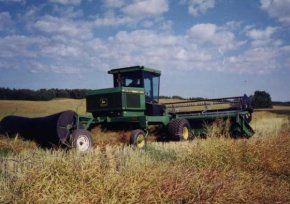
The European Integration |
The Origins of European Integration |
A-D
E-H
I-Z
Agriculture & Rural Development
Audiovisual Policy Common Commercial Policy Competition Policy and State Aids Consumer Policy Development Policy |
| EU Institutions | ||
| The Decision Making Process | ||
| EU Policies: from A to Z | ||
| The EU in the World | ||
Agriculture & Rural DevelopmentMain aims
The Common Agricultural Policy (CAP) is one of the most
important and expensive European policies. The CAP has been funded from what is known as the European Agricultural Guidance and Guarantee Fund. Traditionally, the vast bulk of resources were devoted to guaranteeing a price for farm produce by intervening in the market. This approach resulted in the EU budget paying to take agricultural produce off the market and into storage. In recent years other mechanisms have included capping production through quotas (e.g. in the milk sector) or by "setting aside" land as well as increased use of direct income support to farmers. Resources have also been devoted to agricultural development and diversification under Structural Funds. Further reform was seen as essential – not just to modernise the CAP which already serves agriculture from northern Finland to Southern Portugal but also to prepare for enlargement of the EU to include the countries of Central & Eastern Europe. BudgetEven after recent reforms, the CAP still takes up over 40% of EU expenditure. Consumers complained that the system of ensuring farm income by guaranteeing a price per product has meant prices have been kept unnecessarily high. On the other hand, the proportion of EU GDP devoted to agriculture is not untypical of what many national governments have chosen to spend on agriculture in the past. Countries outside the EU (including neighbours like Switzerland and Norway, Japan and the US) still spend a comparable proportion. Rural DevelopmentThe CAP has traditionally assumed that helping farmers is the best way to help rural communities. It has had limited success in reversing the trend of rural depopulation and doubts have been expressed about whether large subsidies for big, productive farms have really benefited communities in rural areas. So policy has shifted towards a better balance between supporting farmers and developing the rural community as a whole. EnvironmentThe CAP has been criticised as failing to take environmental factors sufficiently into account, for example, by encouraging intensive farming. Food safety and animal welfareThere has been an increasing demand for the CAP to play a part in promoting high standards of food safety and animal welfare, especially after the BSE crisis. International dimensionCAP rules imposing duties on agricultural imports and subsidising exports have long been attacked as unfair by countries outside Europe. They are now limited by international rules under the World Trade Organisation (WTO) and further trade liberalisation for agriculture is one likely result of the next round of WTO negotiations. This will have to embrace not only farm support, but the relationship between agriculture, trade and environment; consumer safety and animal welfare; and labeling/consumer information. Implementing CAP reformAs part of the Agenda 2000 package, EU leaders agreed reforms to the CAP for the period 2000-2006 based on the following policy objective:
Enlargement and CAP reformThe enlargement of the EU to Central and Eastern Europe will bring a number of heavily agricultural and relatively poor economies into the EU. The CAP has to be adaptable enough to incorporate these countries without de-stabilising agriculture either in the existing EU 15, or in the new Members. CAP reform
| ||